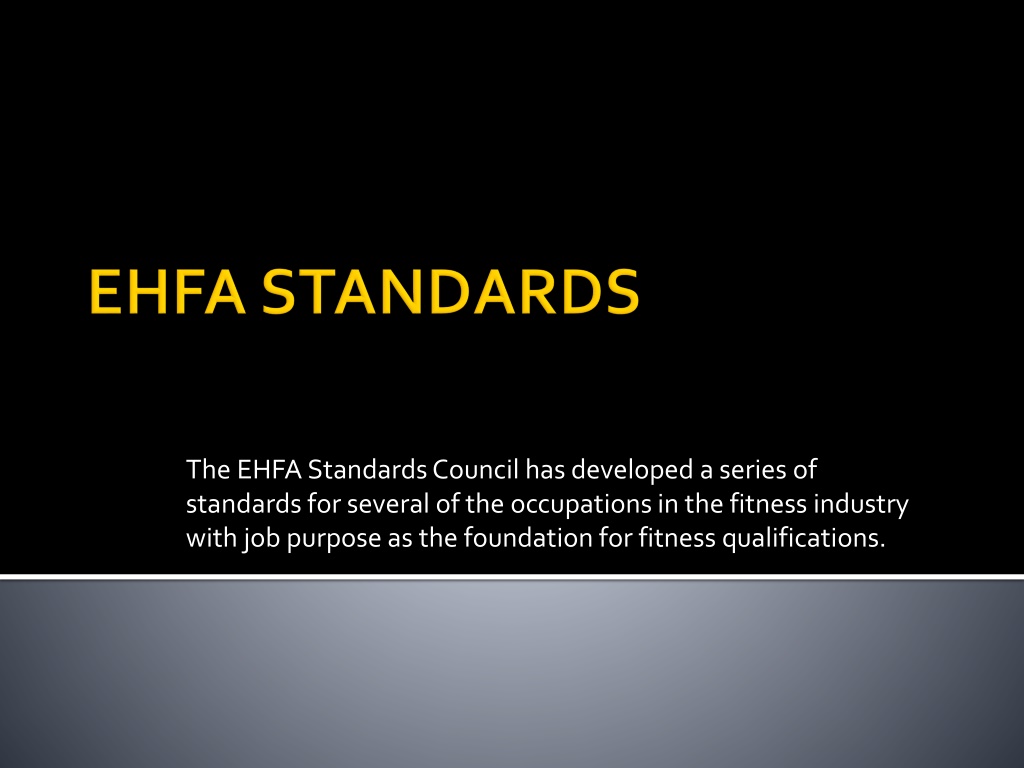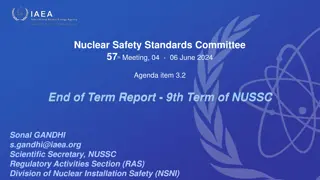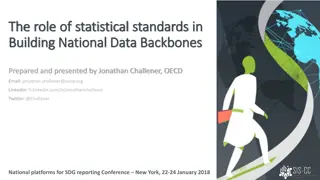EHFA Standards in the Fitness Industry
The EHFA Standards Council has developed a series of standards for fitness occupations, focusing on job purpose as the foundation for qualifications. EHFA provides guidance on standards for people, programs, and places in the health and fitness sector. Since 2003, EHFA has been setting standards for fitness occupations based on client and employer needs, with clear progression criteria. The EHFA Standards documents are divided into three parts: Introductory Statement, Skills and Underpinning Knowledge, and Standards and Competencies Framework. Specific roles like Fitness Assistant and Fitness Instructor have defined purposes and descriptions within these standards.
Download Presentation

Please find below an Image/Link to download the presentation.
The content on the website is provided AS IS for your information and personal use only. It may not be sold, licensed, or shared on other websites without obtaining consent from the author. Download presentation by click this link. If you encounter any issues during the download, it is possible that the publisher has removed the file from their server.
E N D
Presentation Transcript
The EHFA Standards Council has developed a series of standards for several of the occupations in the fitness industry with job purpose as the foundation for fitness qualifications.
The EHFA Standards Council It is the independent body that provides strategic advice guidance and direction to EHFA regarding standards for people, programmes and places across the health and fitness sector. Its main functions are: To monitor the developments across and outside the fitness industry to ensure that the European framework and standards are fit for their purpose and up to date. To develop and monitor a work programme for the Technical Expert Group in terms of standards development.
Since 2003, EHFA, the European Health and Fitness Association, has developed standards for fitness occupations on EQF Levels 2 5 based on the needs of the clients and the employer. The professional must be able to fulfill all the requirements of one level before passing to the next level. To determine the content of a specific job qualification, we must Define the purpose of the occupation Determine which work outcomes lead to achieving that purpose Determine which qualifications (knowledge, skills and competences, range of application) are necessary for the fitness professional in order to fulfill the job expectations.
The EHFA Standards documents are divided in 3 parts: Introductory Statement explains the purpose of the standards and how it was developed Skills and Underpinning Knowledge needed as part of the EHFA Learning Outcomes framework Standards and Competencies Framework describes the Competence Framework containing the essential competencies, associated to skill, range and knowledge, written as learning outcomes.
Fitness Assistant Occupational Purpose To promote health and fitness participation of new and existing members. Also, to provide a friendly and informative fitness environment, actively assisting other workers and members. Occupational Description To provide a clean, safe and friendly environment that promotes regular member attendance and satisfaction. They are a source of information and encouragement for all members and actively assist fitness instructors wherever possible.
Occupational Purpose The purpose of a fitness or group fitness instructor is to build fitness participation of new and existing members through fitness experiences that meet their needs. Occupational Description An instructor delivers fitness instruction to individuals with the use of equipment (Fitness Instructor) or to a group through fitness classes (Group Fitness Instructor). Both types of the occupation have the same purpose and require the same level of knowledge, skills and competences. Therefore, most of the requirements are the same for both occupation types. However, to be able to fulfill this purpose, each of the occupation types may require additional knowledge skills and competences specific for that type.
Fitness Instructor Weightroom machine training: isotonic, isokinetic, pneumatic, hydraulic, Nautilus, etc. Free weight training dumbbells, barbells, kettlebells, bodyweight. Cardio machine training treadmills, upright or recumbent bikes, elliptical trainers, rowers, steppers, etc. Group Fitness Instructor Aerobics Step Aquafitness Indoor cycling Muscle Conditioning Pilates Stretching Etc.
Occupational Purpose Coach healthy clients individually according to their fitness needs, through an agreed exercise/ physical activity plan and assist with behavioural change. Occupational Description A personal trainer s role includes designing, implementing and evaluating exercise/physical activity programmes for a range of individual clients by collecting and analyzing client information to ensure the effectiveness of personal exercise programmes. A personal trainer should also actively encourage potential clients/members to participate in and adhere to regular exercise/physical activity programmes, employing appropriate motivational strategies to achieve this.
Role of the Personal Trainer Functional Anatomy Physiology Nutrition Psycho-Social Aspects of health and fitness Health & Fitness Assessment: Collecting and analyzing information Training Adaptation and Exercise Planning and Programming.
Occupational Titles Youth Fitness Instructor (Adolescents) / Youth Fitness Instructor (Children) Occupational Purpose To instruct health and fitness activities to children and/or adolescents within a safe, secure and fun environment toward encouraging their optimal physical, psychosocial and emotional growth. Also to work with children and/or adolescents and their families, friends and schools to promote lifelong participation in physical activity.
Occupational Description A youth fitness instructor for children and/or adolescents is responsible for the planning, instructing and evaluation of activities for children (6-11 years) and adolescents (12- 17years), including (but not limited to) creative play, games providing basic skills for various sports and general exercise, individual and group fitness activities to promote a healthy lifestyle. A youth fitness instructor is responsible for encouraging children and adolescents and, where possible, their families and friends, to adhere to activities that promote exercise and a healthy lifestyle employing motivational strategies to achieve this.
Human Movement in Children Exercise Physiology in Children and Adolescents Lifestyle Management & Modifications Health and Safety Communication Youth Fitness Instructor Competency Adolescents Children
Occupational Purpose The purpose of the Active Ageing Trainer is to build fitness participation of new and existing exercisers over 50 years of age through group or individual fitness experiences that meet their needs. Occupational Description An Active Ageing Trainer delivers fitness instruction to healthy individuals with the use of equipment in a gym (Fitness Instructor prerequisite) or to a group through fitness classes (Group Fitness Instructor prerequisite). The Active Ageing Trainer differs from a Level 3 Fitness Instructor in their understanding of the physiology of ageing and their ability to work safely with older adults through the adaptation of exercise programme design and delivery. Active Ageing Trainers create a fitness environment that is welcoming and not intimidating for older exercisers.
Knowledge Effects of Ageing on Health, Physiology and Adaptation to Exercise Psycho-Social Aspects of Exercise Participation Guidelines for Exercise Programming and Delivery Age-related Nutrition and Hydration considerations Competences Skills Range
Exercise for Health Specialist works with individuals that have existing chronic health conditions or are at high risk of developing them due to their lifestyle. Occupational Purpose To build fitness participation of new and existing exercisers at risk or with chronic health conditions through group or individual fitness experiences that meet their needs and objectives. They are also expected to review participants progress regularly and report on adherence and outcomes to the relevant stakeholders. Occupational Description He/She can programme and supervise exercise for individuals and groups with a range of low or moderate risk for exercise. They take a holistic approach to the wellness of their clients that includes advising on lifestyle, healthy eating and stress management in addition to exercise relevant to the condition, medication and with respect to professional boundaries.
Occupational Roles Building on the foundation of the role of a personal trainer, the EFHS should additionally be able to: Conduct screening and risk stratification of individuals at risk or with a health condition; Conduct appropriate testing, functional and physical fitness assessments with exercisers and interpret results; Create evidence-based exercise programmes for individuals at risk or with controlled health conditions; Motivate exercisers with controlled health conditions to adopt and maintain healthy lifestyle and eating behaviours; Manage communication with exercisers, medical and health care professionals and maintain professional administrative records.
Core knowledge areas: Role of the EFHS Advanced Functional Anatomy and Biomechanics Physiology and pathophysiology Nutrition for health Psycho-social aspects of health and fitness; Changing health behaviours Health & Fitness Assessment: Collecting and Analyzing Information Training Adaptations, Exercise Planning & Programming for individuals with controlled health conditions Participant management and programme administration
The EHFA Standards Council is continuously creating and updating the standards for exercise professionals to attain the EHFA goal of getting More People, More Active, More Often EHFA is an Associate Partner of the eLF Project The EHFA Standards are the basis upon which the eLF Project has developed its programmes























